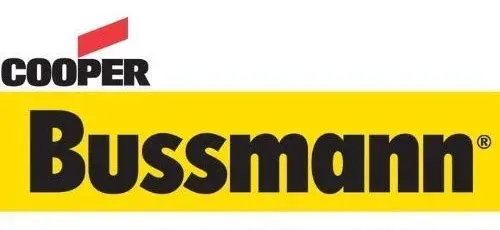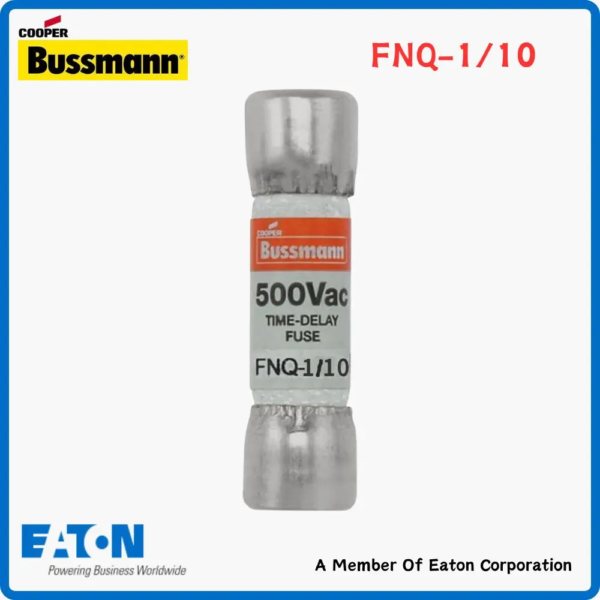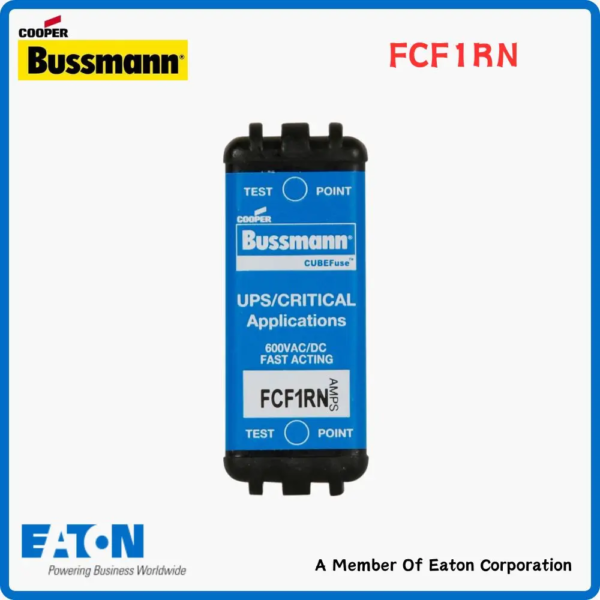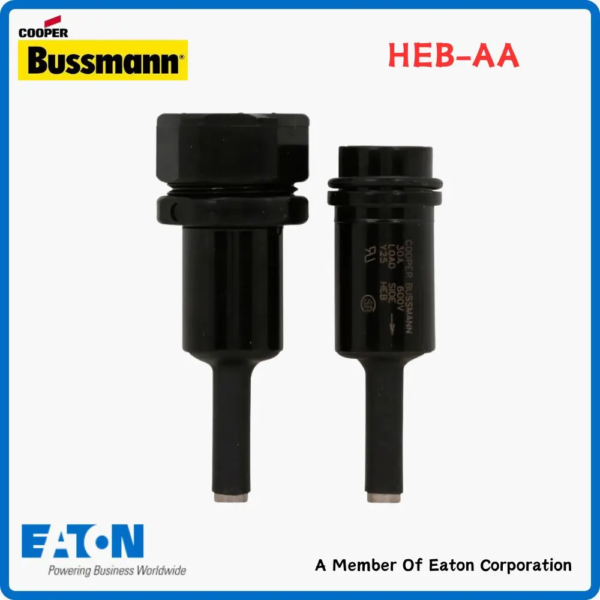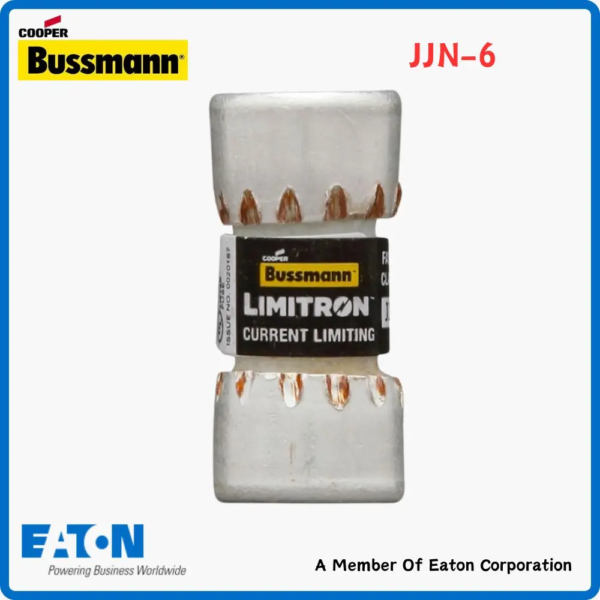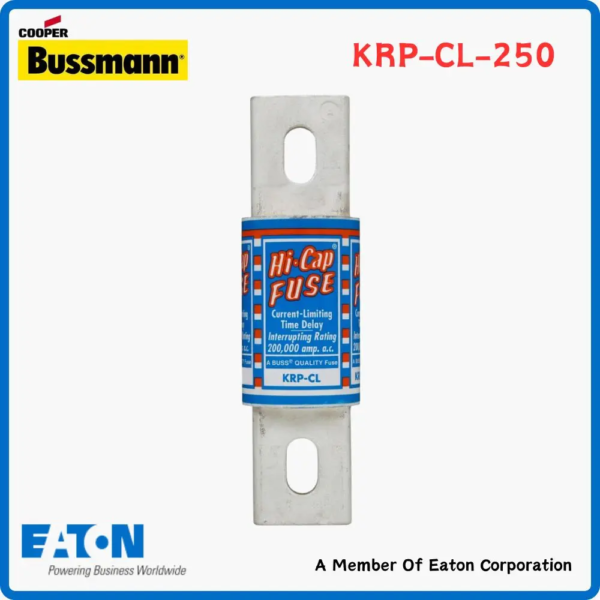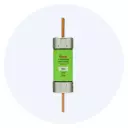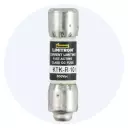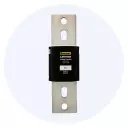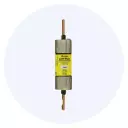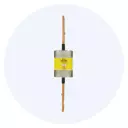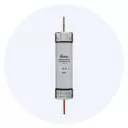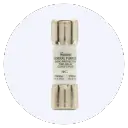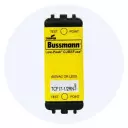Bussmann FNQ Fuses
“Eaton Bussmann Series UL Class CF, FCF 1RN Fuse” has been added to your cart. View cartEaton Bussmann FNQ-1/8 Low Voltage Fuse
Rated 5.00 out of 5In stock
$16.74EachSKU: FNQ-1/8Weight 0.175 lbs Dimensions 0.01138889 × 0.01138889 × 0.04166667 yd Brand Eaton Bussmann
Eaton-Bussmann, with its headquarters in St. Louis, Missouri, is a division of Eaton Corporation that specializes in the production of circuit protection products. These products are designed for use in the electrical, electronic, and automotive industries, both domestically and on a global scale. The company boasts a strong manufacturing network with facilities located in three domestic and six international locations, reflecting its commitment to serving customers worldwide. With a team of approximately 3,000 employees, Eaton-Bussmann is well-positioned to meet the ever-evolving needs of its customers in the electrical protection industry.
Eaton stands as a forward-thinking leader in power management, focused on enhancing lifestyles and safeguarding the planet. Leveraging the worldwide momentum of electrification and digital innovation, they propel the global shift towards renewable energy, addressing pressing power management issues on a global scale.Product type Low Voltage Fuse
Voltage 500 Volt
Eaton Bussmann FNQ-R-1/10 Low Voltage Fuse
Rated 5.00 out of 5In stock
$11.33EachSKU: FNQ-R-1/10Weight 0.175 lbs Dimensions 0.01138889 × 0.01138889 × 0.04166667 yd Brand Eaton Bussmann
Eaton-Bussmann, with its headquarters in St. Louis, Missouri, is a division of Eaton Corporation that specializes in the production of circuit protection products. These products are designed for use in the electrical, electronic, and automotive industries, both domestically and on a global scale. The company boasts a strong manufacturing network with facilities located in three domestic and six international locations, reflecting its commitment to serving customers worldwide. With a team of approximately 3,000 employees, Eaton-Bussmann is well-positioned to meet the ever-evolving needs of its customers in the electrical protection industry.
Eaton stands as a forward-thinking leader in power management, focused on enhancing lifestyles and safeguarding the planet. Leveraging the worldwide momentum of electrification and digital innovation, they propel the global shift towards renewable energy, addressing pressing power management issues on a global scale.Product type Low Voltage Fuse
Voltage 500 Volt
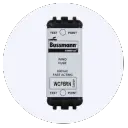 Bussmann WCF Fuses
Bussmann WCF Fuses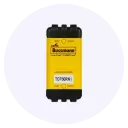 Bussmann FCF Fuses
Bussmann FCF Fuses
Eaton Bussmann Series UL Class CF, FCF 1RN Fuse
Rated 5.00 out of 5In stock
$79.99SKU: FCF1RNBrand Eaton Bussmann
Eaton-Bussmann, with its headquarters in St. Louis, Missouri, is a division of Eaton Corporation that specializes in the production of circuit protection products. These products are designed for use in the electrical, electronic, and automotive industries, both domestically and on a global scale. The company boasts a strong manufacturing network with facilities located in three domestic and six international locations, reflecting its commitment to serving customers worldwide. With a team of approximately 3,000 employees, Eaton-Bussmann is well-positioned to meet the ever-evolving needs of its customers in the electrical protection industry.
Eaton stands as a forward-thinking leader in power management, focused on enhancing lifestyles and safeguarding the planet. Leveraging the worldwide momentum of electrification and digital innovation, they propel the global shift towards renewable energy, addressing pressing power management issues on a global scale.Product type Fuse
Voltage 600 Volt
 Bussmann FRS Fuses
Bussmann FRS Fuses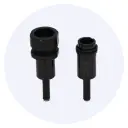 Bussmann HEB-AA Fuse
Bussmann HEB-AA Fuse
Eaton Bussmann HEB-AA Inline Fuse Holder
Rated 5.00 out of 5In stock
$18.99SKU: 504-HEB-AA-2Brand Eaton Bussmann
Eaton-Bussmann, with its headquarters in St. Louis, Missouri, is a division of Eaton Corporation that specializes in the production of circuit protection products. These products are designed for use in the electrical, electronic, and automotive industries, both domestically and on a global scale. The company boasts a strong manufacturing network with facilities located in three domestic and six international locations, reflecting its commitment to serving customers worldwide. With a team of approximately 3,000 employees, Eaton-Bussmann is well-positioned to meet the ever-evolving needs of its customers in the electrical protection industry.
Eaton stands as a forward-thinking leader in power management, focused on enhancing lifestyles and safeguarding the planet. Leveraging the worldwide momentum of electrification and digital innovation, they propel the global shift towards renewable energy, addressing pressing power management issues on a global scale.Product type Fuse
Voltage 600 Volt
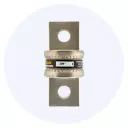 Bussmann JJN Fuses
Bussmann JJN Fuses
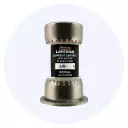 Bussmann JJS Fuses
Bussmann JJS Fuses
 Bussmann JKS Fuses
Bussmann JKS Fuses
Eaton Bussmann Fuse JKS-1 Low Voltage Fuse
Rated 5.00 out of 5In stock
$13.99SKU: JKS-1Brand Eaton Bussmann
Eaton-Bussmann, with its headquarters in St. Louis, Missouri, is a division of Eaton Corporation that specializes in the production of circuit protection products. These products are designed for use in the electrical, electronic, and automotive industries, both domestically and on a global scale. The company boasts a strong manufacturing network with facilities located in three domestic and six international locations, reflecting its commitment to serving customers worldwide. With a team of approximately 3,000 employees, Eaton-Bussmann is well-positioned to meet the ever-evolving needs of its customers in the electrical protection industry.
Eaton stands as a forward-thinking leader in power management, focused on enhancing lifestyles and safeguarding the planet. Leveraging the worldwide momentum of electrification and digital innovation, they propel the global shift towards renewable energy, addressing pressing power management issues on a global scale.Product type Low Voltage Fuse
Voltage 600 Volt
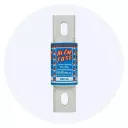 Bussmann KRP Fuses
Bussmann KRP Fuses
Eaton-Bussmann Fuse Guide for Homeowners
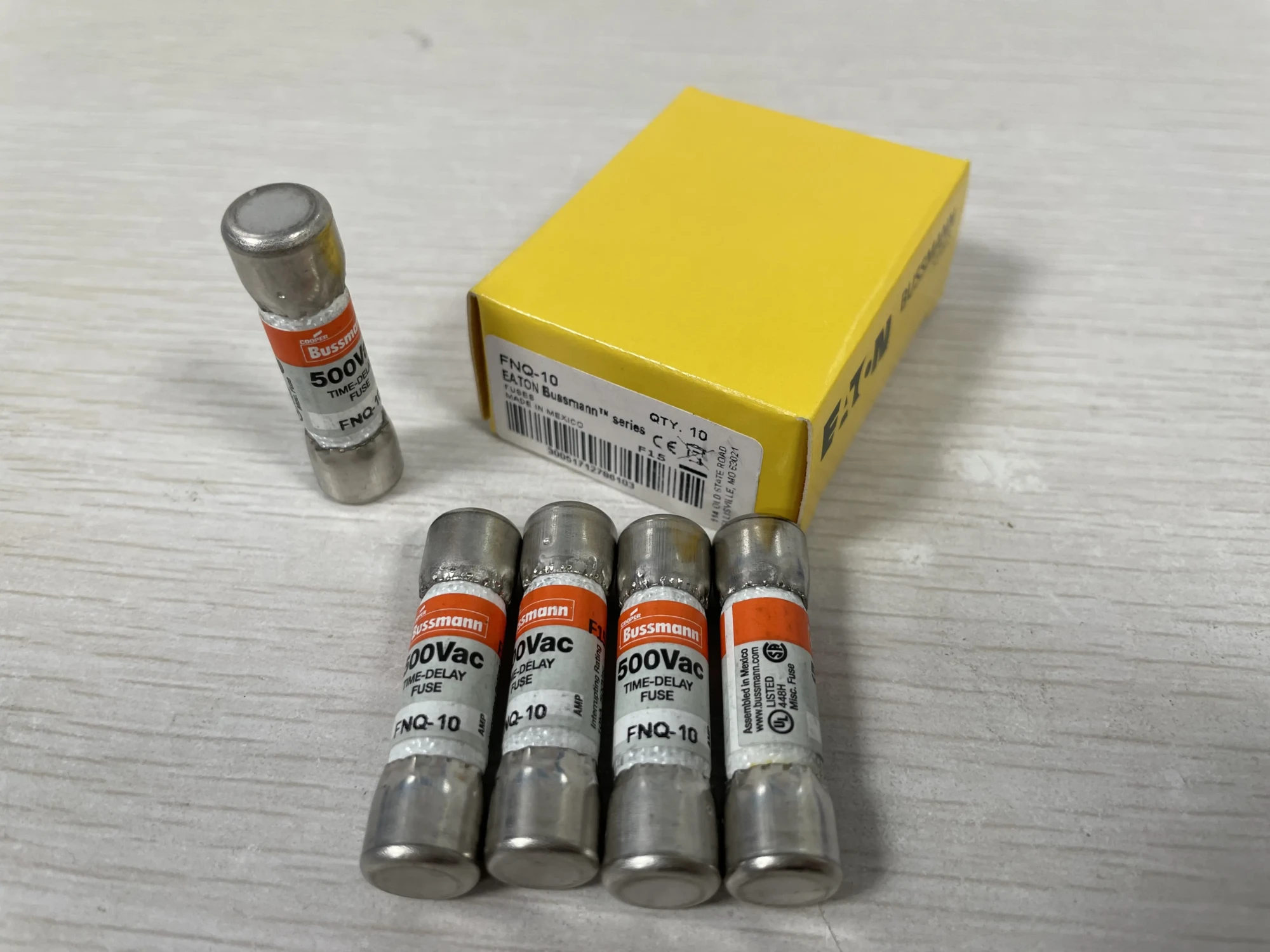
As a homeowner, it’s essential to have a basic understanding of electrical systems and components, including fuses. A fuse is a type of electrical protection device that is designed to melt and break an electrical circuit when an overload or short circuit occurs. One of the leading manufacturers of fuses and circuit protection solutions is Eaton-Bussmann. In this article, we will delve into the Eaton-Bussmann Fuse Guide for Homeowners, exploring the company’s product parameters, specifications, uses, and precautions.
Understanding Eaton-Bussmann
Eaton-Bussmann is a renowned company that specializes in intelligent power management solutions. With a commitment to sustainability and improving the quality of life, the company provides high-quality products and solutions to protect electrical circuits from damage. Their range of products includes power fuses, electronic fuses, and transportation-related fuses, among others.
Product Parameters and Specifications
Eaton-Bussmann offers a wide range of fuses with varying parameters and specifications. Some of the key factors to consider when selecting a fuse include:
- Voltage rating: The maximum voltage that the fuse can handle.
- Current rating: The maximum current that the fuse can handle.
- Time delay: The time it takes for the fuse to melt and break the circuit.
- Interrupting capacity: The ability of the fuse to safely interrupt an electrical circuit.
Eaton-Bussmann fuses are designed to meet specific standards, including UL/CSA certification, IEC standards, and North American fast-blow fuse standards.
Uses of Eaton-Bussmann Fuses
Eaton-Bussmann fuses are used in a variety of applications, including:
- Residential electrical systems: To protect electrical circuits from overloads and short circuits.
- Commercial electrical systems: To protect electrical circuits from overloads and short circuits.
- Industrial electrical systems: To protect electrical circuits from overloads and short circuits.
- Automotive electrical systems: To protect electrical circuits from overloads and short circuits.
Precautions and Safety Considerations
When working with electrical systems and fuses, it’s essential to take necessary precautions to ensure safety. Some key precautions include:
- Always turn off the power: Before attempting to replace a fuse, ensure that the power is turned off at the main electrical panel.
- Use the correct replacement fuse: Ensure that the replacement fuse has the same parameters and specifications as the original fuse.
- Avoid overloading circuits: Avoid overloading electrical circuits, as this can cause the fuse to melt and break the circuit.
- Regularly inspect electrical systems: Regularly inspect electrical systems and fuses to ensure that they are in good working condition.
Conclusion
In conclusion, the Eaton-Bussmann Fuse Guide for Homeowners provides a comprehensive overview of the company’s product parameters, specifications, uses, and precautions. By understanding the different types of fuses and their applications, homeowners can ensure that their electrical systems are safe and protected. It’s essential to take necessary precautions when working with electrical systems and fuses, and to always follow the manufacturer’s instructions and guidelines. By doing so, homeowners can enjoy safe and reliable electrical systems, and avoid the risks associated with electrical shocks and fires.
Additional Resources
For more information on Eaton-Bussmann fuses and circuit protection solutions, homeowners can visit the company’s website or consult with a licensed electrician. Additionally, homeowners can refer to the National Electric Code (NEC) and local electrical codes for guidance on electrical safety and best practices.
FAQs
- Q: What is the purpose of a fuse in an electrical circuit?
A: The purpose of a fuse is to melt and break an electrical circuit when an overload or short circuit occurs. - Q: What are the different types of fuses available?
A: There are several types of fuses available, including power fuses, electronic fuses, and transportation-related fuses. - Q: How do I replace a fuse in my home?
A: To replace a fuse, turn off the power at the main electrical panel, remove the old fuse, and install a new fuse with the same parameters and specifications. - Q: What are the safety precautions I should take when working with electrical systems and fuses?
A: Always turn off the power, use the correct replacement fuse, avoid overloading circuits, and regularly inspect electrical systems and fuses.
